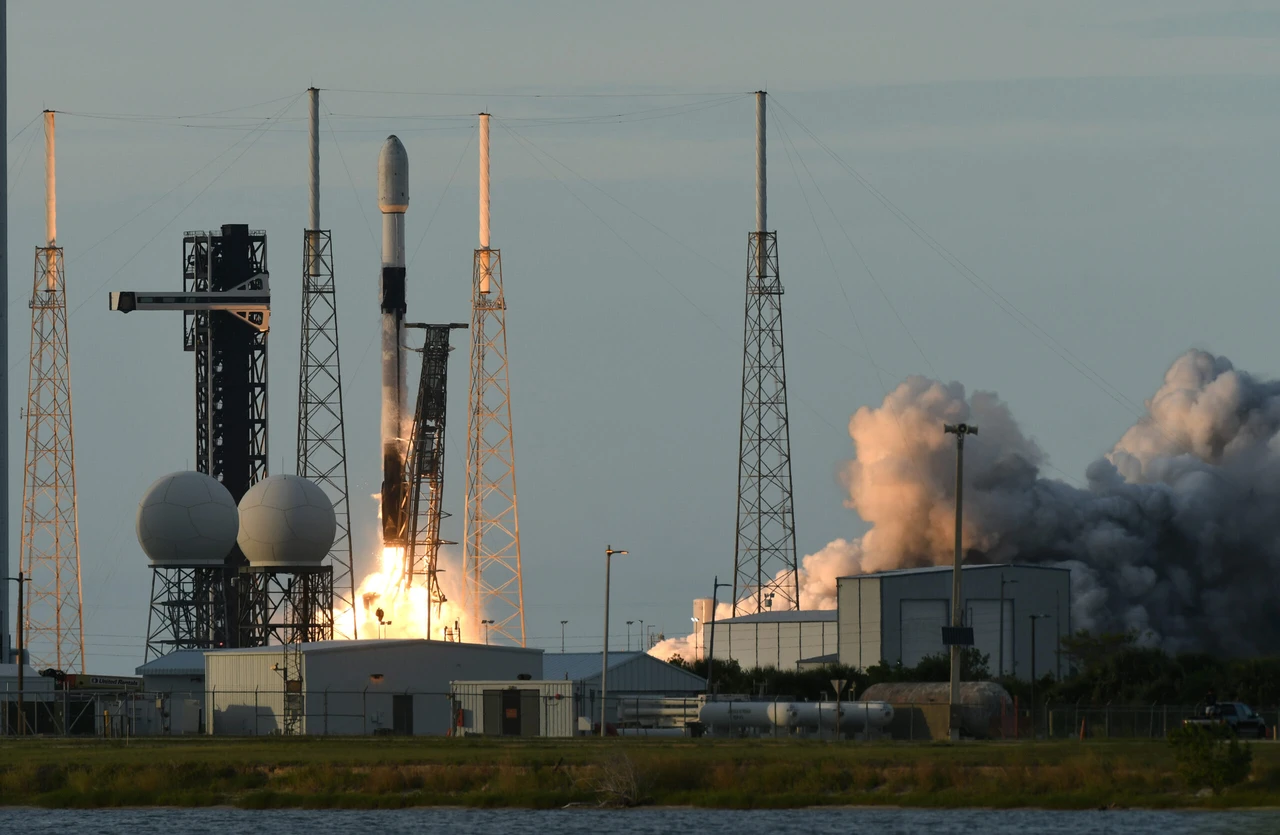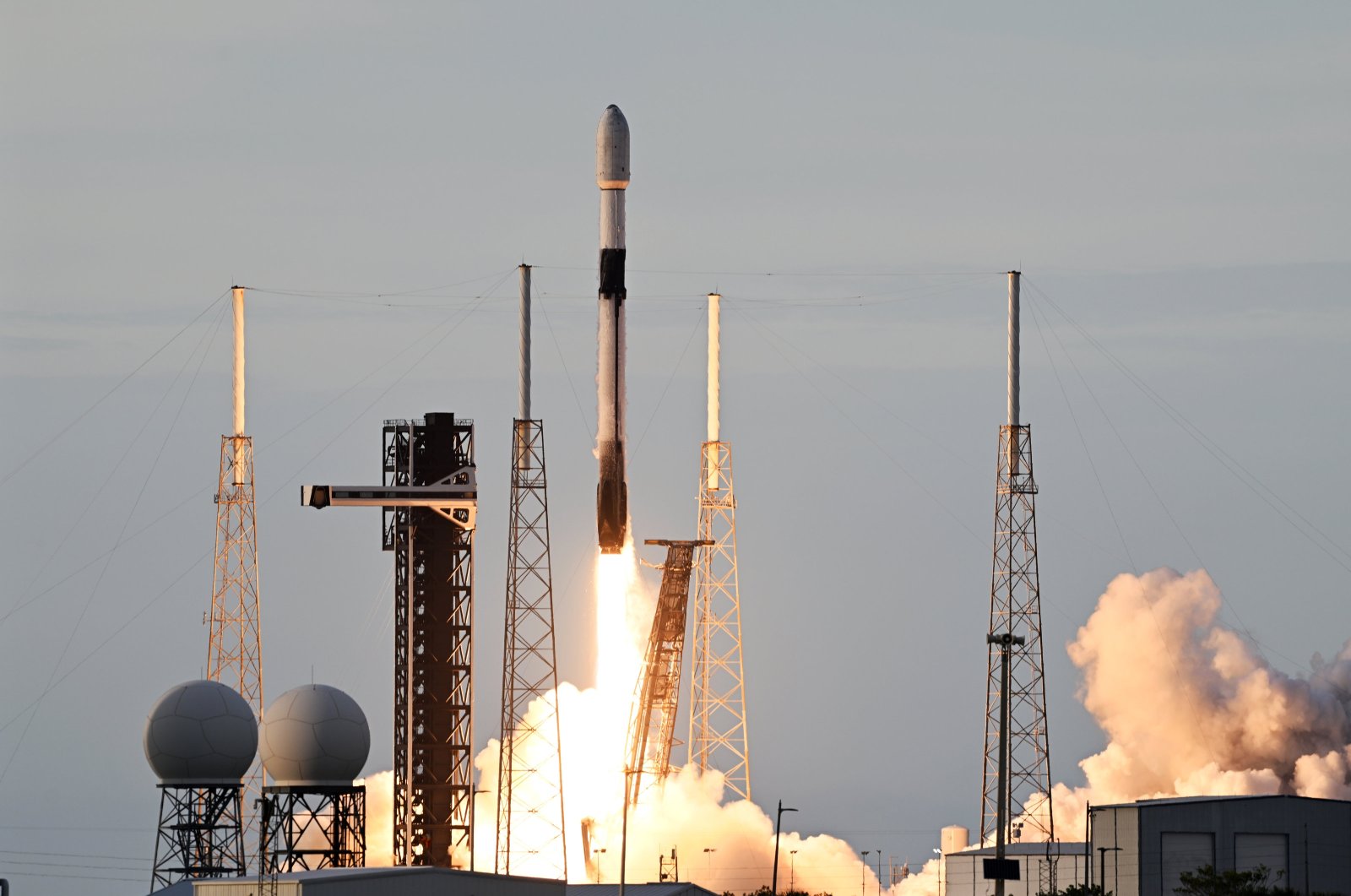Türkiye’s communication satellite Turksat 6A nears final orbit, fully operational by October
 Turkey's first domestic and national communication satellite, Turksat 6A, was launched into space at 02:30 Turkish time from the Cape Canaveral Space Force Station in Florida, USA, by SpaceX's Falcon 9 rocket, Florida, July 9, 2024 (AA Photo)
Turkey's first domestic and national communication satellite, Turksat 6A, was launched into space at 02:30 Turkish time from the Cape Canaveral Space Force Station in Florida, USA, by SpaceX's Falcon 9 rocket, Florida, July 9, 2024 (AA Photo)
Türkiye’s domestically built communication satellite, Türksat 6A, is set to be placed in its final orbit at 42 degrees East by the end of October, according to Turkish Transport and Infrastructure Minister Abdulkadir Uraloglu.
The satellite, which is currently undergoing successful testing at 50 degrees East, will serve for 15 years once operational.
Satellite’s ongoing tests successful
Minister Uraloglu stated that Türksat 6A‘s journey in space is progressing as planned. The satellite reached its test orbit at 50 degrees East on July 20, where its antennas were deployed for the first time.
Following the completion of these tests, the satellite will be moved to its designated operational orbit.
The satellite is currently stabilized at an altitude of 35,786 kilometers following five maneuvers. All functions are operating normally, and the process is advancing according to plan.
Transport and Infrastructure Minister Abdulkadir Uraloglu
Reportedly eight different systems are being tested on the satellite, including power, satellite management, orbit orientation and control, chemical propulsion, electric propulsion, thermal control, telemetry, telecommand, distance measurement and payload subsystems.
These tests are said to be crucial to ensure that Türksat 6A operates efficiently once it reaches its final orbit.
Turkish Minister emphasized the significance of Türksat 6A in reducing foreign dependency on critical communication satellite technologies, highlighting that Türkiye is now among the 11 countries capable of producing communication satellites.
He underlined that the project has not only reduced dependency but also fostered the development of highly skilled engineers and personnel for Türkiye’s satellite and space industry.

Collaborative effort by Turkish companies
The Türksat 6A project is a collaborative effort involving the Ministry of Transport and Infrastructure, Turksat AS, TUBITAK Space, Aselsan, TUSAS and CTECH. Turkish Minister pointed out that over 80% of the satellite’s components were domestically produced, a testament to Türkiye’s growing capabilities in space technology.
TUBITAK UZAY led the development of key systems, including satellite management, orbit orientation control, power, and electric propulsion subsystems. Aselsan contributed by developing the communication payload, while CTECH was responsible for the telemetry, telecommand, and distance measurement subsystems.
TUSAS, besides developing the battery panel, also played a crucial role in the production, integration and testing of the satellite.
Türkiye’s satellite capacity
Once operational, Turksat 6A is expected to boost significantly Türkiye’s satellite capacity, ensuring the redundancy of current satellites and expanding coverage to regions like India, Thailand, Malaysia and Indonesia.
The satellite, equipped with 8.4 kilowatts of power, will primarily support TV broadcasting and communication services over a broad area.
Moreover, the development of Türksat 6A has established a robust satellite production ecosystem in Türkiye, with 84 indigenous satellite components now ready for international export.
The project aims to position Türkiye as a competitive player in the global satellite industry.



